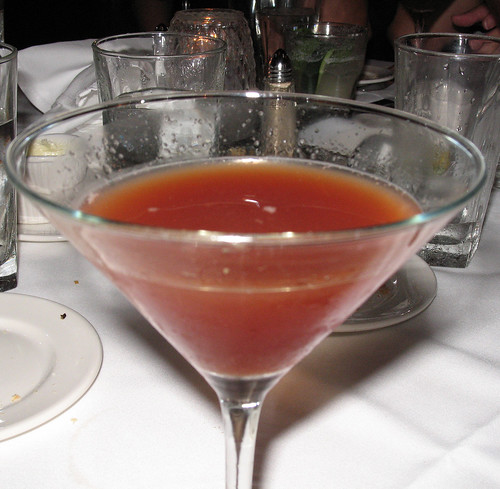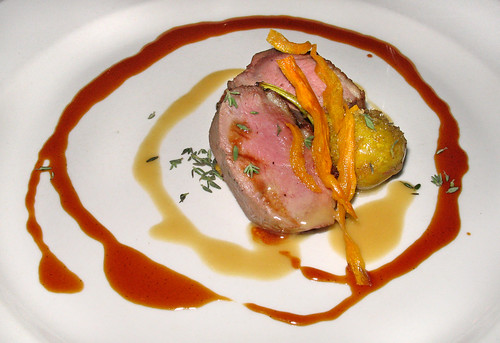The Culross Cocktail
I love CocktailDB. This massive, years-in-the-making collaborative project between Martin Doudoroff and Ted “Dr. Cocktail” Haigh, still a work-in-progress, contains a database of over 4,700 authenticated cocktail recipes (from trusted published sources). When I’m in the mood for a particular spirit combined with a particular ingredient but can’t think of a recipe offhand, I’ll go to CocktailDB, input the ingredients and it’ll give me a list of cocktails featuring those ingredients. (This is like Webtender, you say; not so. The main difference is that CocktailDB doesn’t contain 10,000 vile drinks thought up by college frat boys and you won’t get those in your search results.)
We had a wonderful day on Saturday — some friends came over and brought fixins for goi cuon (Vietnamese spring rolls), I made Shrimp Creole, and we had lots of cocktails. On Sunday evening we were thinking of what we might want to have before dinner, and Wes pointed out that so far this weekend we’d had whiskey-, vodka- and gin-based cocktails. I thought, time for some rum. I was also keen to play with the bottle of Marie Brizard Apry, so I input “rum” and “apricot brandy” into CocktailDB … and came up with this one. As far as I know, it first appeared in the Savoy Cocktail Book. It’s light and quite lovely.
Culross
1 ounce white rum.
1 ounce Apry or other apricot brandy.
1 ounce Lillet.
3/4 ounce fresh lemon juice.Combine with cracked ice in a cocktail shaker; shake and strain.
Garnish with a cherry.
I’ve seen some drier variations that look worth trying too: try 2 ounces rum, 1/2 ounce each of Apry and Lillet, and 1/4 ounce lemon juice.
Erik tells us that this cocktail is miles better when substituting Cocchi Americano for the Lillet (as today’s Lillet is less flavorful and less bitter than the Kina Lillet that existed when this cocktail was created). Cocchi Americano is a wonderful quinquina (a fortified wine with quinine as a bittering agent) and I absolutely love it. Give it a try here if you can find some. He also suggests, since Cocchi is a bit sweet, to use a dry apricot brandy (such as Blume Marillien apricot eau-de-vie). Talk about making this drink POP … wow.








